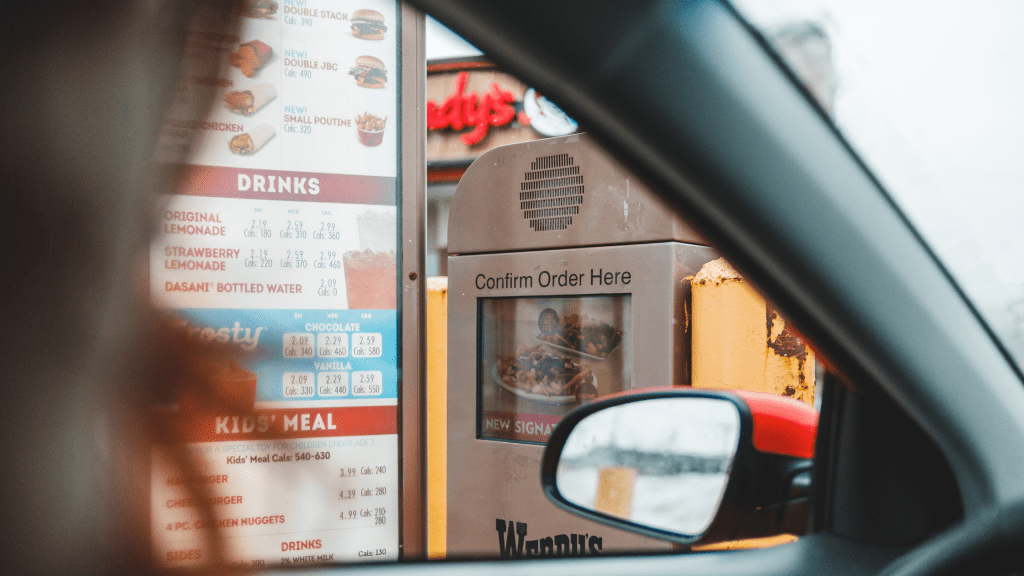Exciting news: Brizo FoodMetrics has been acquired by Datassential! Learn more.

When the pandemic hit, dining in at restaurants was no longer an option, and the demand for pick-up and delivery soared. In 2022, customers are back in restaurants, but the demand for takeaway food has not necessarily faded. Younger generations, like Millenials and GenZ consumers, have kept the habit of ordering to-go food, particularly with drive-thrus.
The purpose of going to an establishment with a drive-thru is convenience and speed – there may be a line here, but you still don’t even have to leave your car! More often than not, ordering at a drive-thru is quicker than ordering food for pick-up or delivery. Customers might be ordering an iced latte, or maybe a burger with fries, and by the time they get to the window and pay, the expectation is that their order will be ready.
While this is the expectation and intention, this is not always the reality. All food and drink served at establishments with drive-thrus are designed to be able to be made at a rapid speed. These operation runs like a small factory, with staff trained to work at assembly line speeds. Customer orders are taken and processed quickly. Despite all of this, customers still might find themselves stuck waiting in a drive-thru line, defeating the whole purpose of the drive-thru.
Although drive-thrus are designed with speed and convenience in mind, they are not always able to meet their full potential. With the continued increased demand for drive-thru food, restaurants simply can’t keep up. In fact, 70 percent of consumers reported that they desire faster wait times.
On top of this expectation of faster service and reduced wait times, 52 percent of customers would like to see tech that makes ordering and payment easier, while 49 percent want more convenient takeout/delivery options.
If a restaurant only has one drive-thru lane and has the maximum amount of well-trained staff working, how could it possibly become faster? The answer: automation.
Taco Bell unveiled its new drive-thru-only design (coined Taco Bell Defy) last year, which included four drive-thru lanes to maximize speed and customers served. Sounds nice and efficient, right? Having multiple drive-thru lanes could certainly be a solution to increasing drive-thru speed, but most establishments simply don’t have the real estate to execute this.
What the new Taco Bell design also incorporates is automation, and this is something that every food service operation can make use of. A few key features include digital check-in screens for mobile order customers, and a two-way audio and video technology service for customers
Another great example of a QSR making use of innovative automation is McDonald’s; over the past few years, the chain has been trialing an AI (artificial intelligence) voice software for taking customer orders at the drive-thru.
Dunkin’ wants to continue to automate its drive-thrus, while still providing personalization for its customers. The donut chain is testing drive-thrus that are able to recognize loyalty members as soon as they pull up to order using the geolocation feature within its mobile app. An AI-powered digital board will greet the customers by name, show their loyalty points, display recent orders, and ask if they want any add-ons based on previous orders.
Many restaurants already use some form of modern kitchen management software, POS system, or employee training software; all of which help increase automation, speed, and efficiency in an establishment. As the large QSRs have shown recently, newer technologies like robots and AI-powered systems are the next wave of restaurant technology that will be used to improve customer wait times and the drive-thru experience.
Restaurant technology is needed to provide customers with faster wait times. A slow drive-thru is somewhat of an oxymoron; no one wants to wait in a sluggish line of cars for 15 minutes to get a quick meal. When it comes to drive-thrus, the quicker, the better. In addition to increasing the speed of service, technology can also improve the quality of the service, minimize mistakes, and even provide a higher level of personalization.
For vendors selling tech that brings automation to restaurants and food service operations, the time is ripe for opportunity. As a matter of fact, Chipotle has put aside $50 million to invest in technology companies that can further automate the restaurant industry. Last year, its first investment was into Nuro (a start-up that creates self-driving delivery robots), and this year it is trialing Chippy, a chip-making robot.
While most restaurants, about 69 percent, use at least one form of technology in their operation, restaurateurs and operators report that they would like to be using more.
Getting in touch with restaurants that need your tech
Establishments with drive-thrus need technology more than ever to meet the ever-increasing expectation and demand for decreased wait times. Restaurant technology vendors are there to provide the tools for food service operations looking to meet new customer demands. Right now is the time when vendors should be getting connected to the decision-makers of food service establishments. And this is exactly where Brizo can help.
With over 782k contacts, Brizo can assist vendors gain access to the right people. Cold calling or emailing can be a major waste of time and energy, and with ample opportunity for meeting current restaurant and customer demands, now is not the time to be wasting either of these things. Take advantage of the industry’s need for automation-providing tech by getting in touch with the right contacts today. Brizo offers a free trial of our food service market analytics platform so you can get started right away!